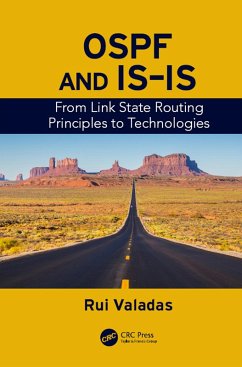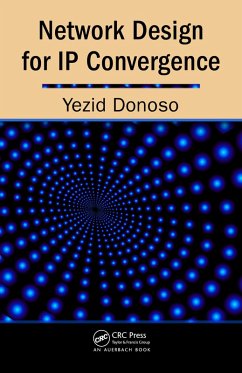
OSPF and IS-IS (eBook, PDF)
From Link State Routing Principles to Technologies
Versandkostenfrei!
Sofort per Download lieferbar
44,95 €
inkl. MwSt.
Weitere Ausgaben:

PAYBACK Punkte
22 °P sammeln!
This book describes and compares both the IPv4 and IPv6 versions of OSPF and IS-IS. It explains OSPF and IS-IS by grounding the analysis on the principles of Link State Routing (LSR). It deliberately separates principles from technologies. Understanding the principles behind the technologies makes the learning process easier and more solid. Moreover, it helps uncovering the dissimilarities and commonalities of OSPF and IS-IS and exposing their stronger and weaker features. The chapters on principles explain the features of LSR protocols and discuss the alternative design options, independently...
This book describes and compares both the IPv4 and IPv6 versions of OSPF and IS-IS. It explains OSPF and IS-IS by grounding the analysis on the principles of Link State Routing (LSR). It deliberately separates principles from technologies. Understanding the principles behind the technologies makes the learning process easier and more solid. Moreover, it helps uncovering the dissimilarities and commonalities of OSPF and IS-IS and exposing their stronger and weaker features. The chapters on principles explain the features of LSR protocols and discuss the alternative design options, independently of technologies. The chapters on technologies provide a comprehensive description of OSPF and IS-IS with enough detail for professionals that need to work with these technologies. The final part of the book describes and discusses a large set of experiments with Cisco routers designed to illustrate the various features of OSPF and IS-IS. In particular, the experiments related to the synchronization mechanisms are not usually found in the literature.
Dieser Download kann aus rechtlichen Gründen nur mit Rechnungsadresse in A, B, BG, CY, CZ, D, DK, EW, E, FIN, F, GR, HR, H, IRL, I, LT, L, LR, M, NL, PL, P, R, S, SLO, SK ausgeliefert werden.













